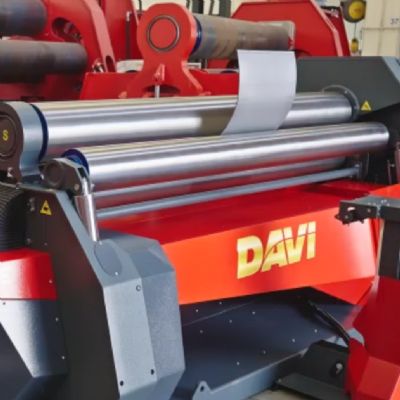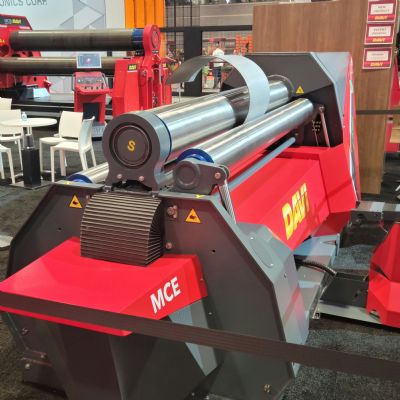• More than 15 years prior to the accident, the company acquired a Cincinnati horizontal milling machine. The plaintiff never received formal training on the mill, but was trained on how to run milling machines similar to the Cincinnati mill during his apprenticeship. He had lots of experience with the Cincinnati mill and used it thousands of times before his accident. At the time of his accident, by the plaintiff’s own admission, he was the most qualified person to run the Cincinnati mill.
• Before using the Cincinnati mill, the operator had to set the spindle speed by using a dial. The appropriate spindle speed varied, depending on the number of cutters used and the type of metal to be cut. The spindle speed dial was immovable without the mill’s power being on, but the dial could not be moved with the spindle moving. The speed indicated by the dial was not als accurate because vibrations from the mill would make the dial move, so the operator had to move the dial and then start the spindle to ensure the speed was correct. To determine whether the mill was running at the proper speed, the operator would look at the amount of chip load, the size and temperature of the cutting and the smoothness of the operation. If the speed was not correct, the operator would stop the spindle, move the dial and check the speed again by starting the spindle.
• The mill also had a spindle activation lever that would start and stop the spindle attached to the cutters that made the requisite cuts. The lever vibrated out of position, so it was secured by rubber bands. The lever was not original to the mill, but was a replacement longer than the original. The lever, approximately 3 ft. long, was located at chest level of an employee of average height. Moving the lever to the right activated the spindle. The lever could vibrate out of position because it was not properly secured by rubber bands, the speed of the mill was not correctly set, or both.
• The plaintiff was assigned to the job of using the Cincinnati mill to cut grooves. On that day, the plaintiff found that the cutters’ tips were broken because the lever had vibrated out of position.
• At the time of the accident, the plaintiff was setting up the mill. He adjusted the speed dial to establish the correct cutter speed. Because the speed dial was not reliable, he had to go to the side of the mill and engage the spindle activation lever to rotate the cutters so that he could observe the rotating cutters and adjust the speed.
• The plaintiff does not recall what occurred after he went to the side of the mill, and there are no witnesses. The plaintiff’s left hand and arm became entangled in the cutters. The cutters were rotating when the plaintiff was injured, which indicates that the spindle activation lever had been activated. If the plaintiff intentionally activated the spindle activation lever, he would have activated it with his right hand. The plaintiff has no idea how his left hand and arm got into the cutters, except that it was inadvertent. The plaintiff was wearing gloves, which were common for operators to wear when operating the Cincinnati mill. The company had supplied the gloves, though it was not required that the plaintiff wear them.
• When the plaintiff was found, he was flush against the mill, with his body against the spindle activation lever, holding it in the “on” position. His gloved left hand was caught in and shredded by the mill’s unguarded cutters.
• After the accident, the company pulled the mill out of service and moved it to a different part of the plant and out of the general work area.
• Thirty years prior to the incident, the plaintiff was in a car accident and suffered injury as a result, resulting in a limp that caused him to drag his left foot. The problems with his limp got worse as he aged. The plaintiff never requested special accommodations and never told anyone that there were some operations he could not perform because of his limp. He was not required to wear any special equipment nor use a cane or crutch. It is unknown whether the plaintiff stumbled into the mill or if a stumble played a part in his accident.
• The company was cited by OSHA because “Point(s) of operation of machinery were not guarded to prevent employee(s) from having any part of their body in the danger zone(s) during operating cycle(s).” The citation stated that the point of operation on the Cincinnati mill was not guarded and an employee’s left arm was caught in the unguarded cutting blades.
For an Ohio intentional workplace tort to exist, an injured employee must demonstrate three elements:
1) Knowledge by the employer of the existence of a dangerous process, procedure, instrumentality or condition within its business operation;
2) Knowledge by the employer that if the employee is subjected by his employment to such dangerous process, procedure, instrumentality or condition, then harm to the employee will be a substantial certainty; and
3) That the employer, under such circumstances, and with such knowledge, did act to require the employee to continue to perform the dangerous task.
In the key second element of “substantial certainty,” the District Court held that the employer’s knowledge of that element had to be actual knowledge of the exact dangers that ultimately caused the employee’s injury. The court analyzed four conceivable alternative scenarios for the accident. The court overcame this uncertainty by determining that the closeness of the point-of-operation unguarded cutters (less than 12 in. from the replacement lever) meant that if the plaintiff tripped or slipped during or after the engagement of the replacement lever, there was a risk that he would fall into the machine.
Then, despite the facts that no one previously had been injured or complained about the machine and that it had not been cited by OSHA nor found by the plant safety committee to present any hazard, the federal court found that employer knowledge of “substantial certainty” existed. It concluded that:
• The company knew that the worker had to operate a replacement lever on the Cincinnati mill that was less than 12 in. from unguarded cutters;
• Its machine operator wore gloves, and those gloves made the operation of the machine more dangerous;
• This particular machine operator had a tendency to trip and stumble, which made it dangerous for him to work near the unguarded cutters; and
• The company received an OSHA citation earlier for having a similar unguarded situation on a different machine, which amounted to an awareness of a dangerous situation.
This last historical citation inference illustrates the problem of leaving OSHA guarding citations unappealed. They become potential admissions in civil cases as well as under OSHA. And, one might think of OSHA citations on the specifically referenced cited machine as applying to all machines similar to it. MF
Technologies: Bending
 Douglas Ehlke
Douglas Ehlke







